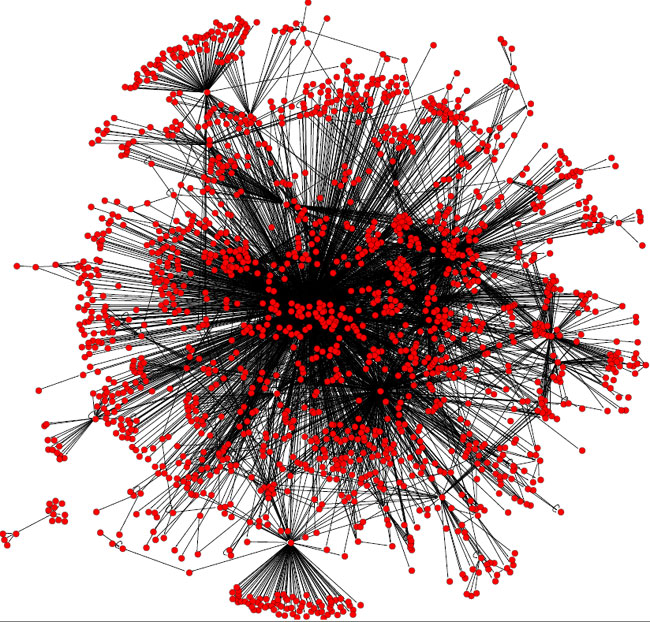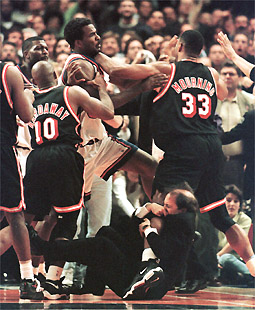Let's say you have an important, executive level role to fill in your organization. It is the kind of job that does not come open all that often in your organization, or even among your competitors.  Legendary Marquette coach Al McGuire
Legendary Marquette coach Al McGuire
It is a really attractive position - internally and externally prestigious, well-compensated, remarkably stable and secure, and offers the right candidate room and opportunity to materially influence outcomes at the organization and quite possibly in the industry at large.
The type of position that you have to hire for very carefully, since it is in the kind of field that while there may not be hundreds of qualified candidates, there will be quite a few, and all of them will bring long histories of achievement and success with them, and many if not most will also possess reams of background material for potential review.
You quickly realize the the complexity, importance, and visibility of this hire requires you to take some 'extra' precautions - you engage an external search firm to assist in the identification and screening of potential candidates, you enlist a large internal hiring committee to gather input and advice from a wide set of perspectives, and at one point, after the search was about one year underway, essentially scrap everything and started all over, having determined that the 'perfect' candidate had not been identified.
So finally after about a two-year vetting process, you finally find the 'right' candidate. A candidate that brings the background, experience, and (hopefully) the right blend of 'soft' skills, you know that intangible but essential blend of attitude, initiative, and collaborative spirit that would make him or her absolutely the best possible choice. The candidate passes the external screening process, gains the support and recommendation of the internal hiring committee, and ultimately is blessed by the highest leaders of the organization and receives and accepts an employment offer.
What could possibly go wrong at this point, with all the time, effort, smart people involved in the process, and 'public' nature of the position and search?
Exhibit A - Marquette University (a Catholic, Jesuit university 'dedicated to serving God by serving our students and contributing to the advancement of knowledge' (from www.marquette.edu), and the search for a new Dean for the College of Arts and Sciences.
In this search, only after the offer was issued did things get interesting.
Here is the quick recap from what I could piece togther:
1. Marquette spends two years searching, screening, vetting, interviewing, and finally finding the 'right' candidate for the Dean position. A long time for sure, but not completely out of the realm of possibility for these kinds of searches.
2. The candidate, and now the prospective new Dean, is Seattle University Professor of Sociology Jodi O'Brien, a scholar whose research focuses on gender and sexuality issues.
3. After some external pressure and influence (allegedly) - Marquette rescinds the job offer citing the sudden discovery of some candidate writings the are 'inconsistent' with the Marquette culture. So sudden in the fact that the expensive, two-year long search process either did not uncover the writings, or even more troubling that they were not actually considered prior to the offer being given.
We are not talking about random Tweets or blog posts here, but published scholarship that is incredibly easy to find and in fact, are documented on Professor O'Brien's resume. Some Marquette students express their outrage.
4. Marquette now has entered what appear to be settlement talks with Professor O'Brien in hopes that the negotiations will (according to O'Brien), "take into account not only the harm done to me personally and professionally, but also acknowledges this situation as a learning opportunity for the Marquette community".
And the cynic in me thinks the 'learning opportunity' may involve cutting a nice-sized 'we really messed this thing up, please now go away' check.
Forget if you can the sex and religion angle to this, and think about the more universal lesson from the Marquette debacle. If you need two years, have to spend buckets of cash, and engage dozens of internal and external experts and you still can't figure out the candidate does not match your culture, then you either don't have any idea what you culture is (or want it to be), or you do know what it is and you just don't care.
But being unable to accurately screen and hire for cultural fit will come back to get you, maybe not in as public and embarrassing a way as in the Marquette example, but perhaps at least in an embarrassing 70s leisure suit kind of way.
 Punchy
Punchy
 Steve
Steve





